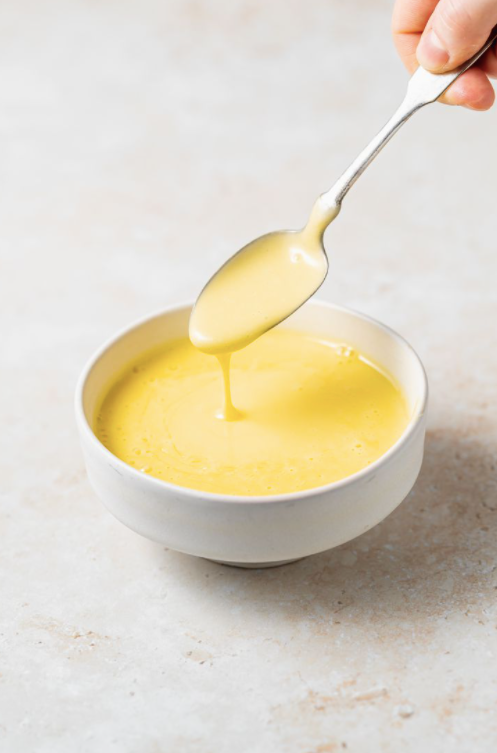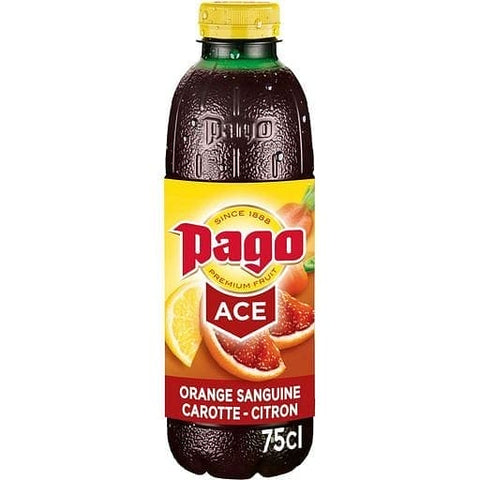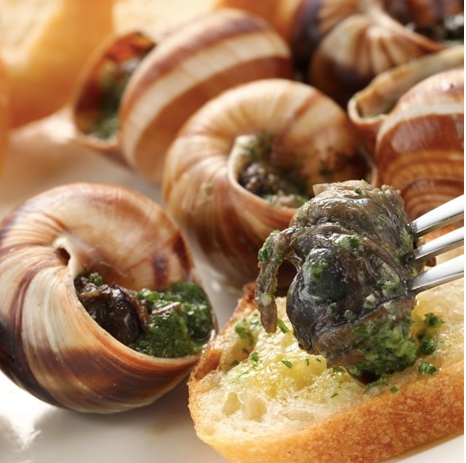In the culinary arts, the term "sauce" refers to a thickened liquid served with other foods. The French word for sauce is "sauce," but this does not mean that all sauces are of French origin. Most sauces have foreign origins. The French have perfected and enhanced countless sauces over the years, giving them their signature touches and making them popular in kitchens worldwide.
Types of French Sauces
The five Mother Sauces are Espagnole (brown), Veloute (roux-thickened), Bechamel (white), Hollandaise (egg yolk-thickened), and Tomato. Hundreds of derivatives can be prepared from these five mother sauces, each with its unique name and preparation technique. Some examples include Sauce Mornay (Bechamel with cheese), Sauce Choron (Bechamel with tomato), Nantua (Crayfish cream sauce) and Bernaise (Hollandaise with tarragon). Although there are many sauces, they can be divided into two general categories: thickened and unthickened.
- Thickened Sauces
- Unthickened Sauces
What is a sauce?
A sauce is liquid or semi-solid food served on or used in preparing other foods. It comes from the French word salse which means salted although most sauces contain little to no salt. Sauces are not created equal and can vary in their consistency. They may be watery like a broth, creamy like Alfredo, or thick like gravy. In cooking, the term sauce also refers to the method of preparation. Sauces may be used for savory dishes and sweet dishes such as desserts. Sauces generally consist of liquid and flavoring elements and are often thickened with starch.
- Sauces are used in cooking to add flavor, moisture and visual appeal to a dish. Sauce is a French word taken from the Latin salsa meaning salted. Sauces need a liquid component, but some sauces (for example, pico de gallo salsa or chutney) may contain more solid components than liquid. Sauces are an essential element in cuisines all over the world.
Overview of French sauces
Here's a quick overview of the most common French sauces, their ingredients and their uses.
Mayonnaise: Mayonnaise emulates egg yolks, oil and lemon juice (or vinegar). It can be used as a sandwich spread or as a base for other sauces like tartar sauce or aioli.
Béchamel: A roux made with milk; the most common white sauce in France, it's often used as a base for gratins.
Tomato Sauce: Tomato sauce, made with tomatoes, garlic, onion and herbs (typically thyme), is a staple of French cooking. It's used as a base for many dishes, including moussaka and lasagna.
Hollandaise: Hollandaise is an emulsion of butter and egg yolks stabilized with lemon juice or vinegar. It's served with fish and eggs Benedict and is also the base for many other classic sauces such as béarnaise (which includes tarragon) and Maltaise (which has blood oranges instead of lemon juice).
Béarnaise: Béarnaise sauce is similar to hollandaise but includes chopped shallots and tarragon. It's served over steak and veggies.
Thickening the sauce
Making a thickened sauce is one of the most important skills in cooking. It's also one of the easiest. A sauce that uses flour, butter and milk as its base is called a béchamel. Once you've mastered béchamel, you can make the other three "mother" sauces — velouté, Espagnole and hollandaise.
Béchamel is easy to make and is a good sauce to use when you want to flavor something but don't have any drippings or stock on hand. You can make it as thin or thick as you like simply by adding more or less flour. It's not only delicious, but nutritious too!
Thickening sauces with flour
The first step in making béchamel is melting the butter over medium heat in a heavy-bottomed pan. Once the butter has melted, whisk in the flour until it forms a paste (roux). Let the roux cook for about two minutes so that any raw flour taste disappears and sprinkle with salt if desired.
Gradually whisk in the milk — it's important to add this slowly at first so that you don't end up with lumps. Once about half of it has been added, you can pour in the rest
Types of sauces
The sauce is one of the most basic and essential components of cooking. It's a liquid or semi-solid foodstuff that adds flavour to the dish and makes it more appealing.
All kinds of sauces are used either as an accompaniment or as an ingredient in cooking. The importance of sauce can be gauged from the fact that it is even included in various cooking techniques, such as sauteing and braising.
In simple words, a sauce is any preparation that complements a cooked food item by adding both taste and texture to it. These dressings are generally prepared by combining different ingredients to obtain flavours and color. Sauces can be categorized into two types, namely cold sauces and hot sauces. Hot preparations usually accompany meat, fish, poultry, etc., whereas cold dressings generally serve appetizers and desserts.
Some common types of sauces are listed below:
There are three significant sauces in French cuisine:
- Mother Sauces
- Butter Sauce
- Emulsified Sauces

Mother Sauces are the five most basic sauces of French cuisine. They are the basis for all other sauces, including béchamel, velouté, Espagnole, hollandaise and tomato sauce. All mother sauces are made from a roux (a mixture of butter and flour) combined with a liquid (milk, stock or cream).
Butter Sauce is made by whisking in butter to emulsions such as hollandaise sauce. The butter adds richness and flavour to the sauce.
Emulsified Sauces are made by combining two liquids that do not usually mix, such as oil and vinegar or lemon juice. Egg yolks are used as an emulsifier to make the two liquids combine to do not separate again.
Famous French sauces
One of the essential things about French food is its sauces often define it. Of course, the different regions of France all have their tastes, but in general, sauces are a vital component of French cuisine.
This article will take you through some of the most famous French sauces and how they are used.
- Béarnaise sauce: This is a rich, buttery sauce made from egg yolks, butter, shallots and tarragon. It goes well with red meat and vegetables.
- Bordelaise sauce: This is a classic wine-based sauce with shallots and bone marrow great for beef dishes.
- Brown sauce: This is a tomato-based sauce with herbs and mushrooms that can be used as a base for other sauces or served on its own on meats or fish.
- Hollandaise sauce: One of the most famous French sauces made out of egg yolks, butter and lemon juice. It's usually served with vegetables or fish, though it can also make other dishes like Eggs Benedict.
- Mayonnaise: While this may not be considered a more traditional French sauce, it has been adopted as one of the most common ones used today in many.
French mother sauces
The Mother Sauces are a French invention and consist of Béchamel, Velouté, Espagnole, Hollandaise and Tomate. Each of these sauces is made from a roux (a combination of fat and flour) and a liquid (usually stock). Other sauces can be derived from these mother sauces by adding additional ingredients.
- Béchamel is made by adding milk to a roux. Once the sauce has thickened, it's seasoned with salt and pepper, as well as nutmeg or other spices. Typical dishes that use this sauce include macaroni and cheese, lasagna and moussaka.
- Velouté is made with light stock (such as veal, chicken or fish), which is added to a roux that has been flavoured with chopped onions. If the stock isn't flavorful enough, more flavour can be added in white wine, parsley or mushrooms. It's also sometimes finished with cream.
- Espagnole is made by adding brown stock to a brown roux. Tomato paste is often added to make the sauce darker and richer in flavour. Espagnole sauce can be further enriched by adding glace de viande (meat glaze).
French daughter sauces
Daughter sauces like Béchamel and Hollandaise are created from the original mother sauces. The mother sauces form the foundation for many other sauces in French cuisine.
They are:
- Béchamel - white sauce made with a roux and milk. It is used as a base for many rich cream soups and can make the cheese sauce. When gruyere cheese is melted into a béchamel, it becomes Mornay sauce (and makes the best macaroni and cheese!).
- Velouté - blonde roux whisked into chicken or veal stock. This is often the base of cream soups, like chicken pot pie soup.
- Espagnole - dark brown roux whisked into beef stock. This forms the demi-glace base and is often used for gravies and stews.
- Tomato - tomato puree or tomato concasse whisked into a blond roux. This is the basis of many Italian dishes, from pizza to pasta sauces to lasagna.
Are all sauces condiments?
No, not all sauces are condiments. Generally speaking, there are two primary differences between a sauce and a dressing.
- First, a sauce is usually served with food, whereas an herb is used during preparation. So, for example, if you were making tacos, you would use salsa as a condiment to spice up the meat, but you might serve guacamole on the side as a sauce to dip your taco shells in after they're cooked.
- The second difference is that condiments are generally more strongly flavoured, acidic or spicier than sauces. The reason for this is that sauces are meant to complement the flavour of the food it's served with. So if it has too strong of a flavour that competes with the taste of the food it's meant to be served with, then it becomes something other than a sauce — perhaps a relish or some different sort of topping.
Difference between béchamel and velouté sauces
The two most basic sauces in classic French cooking are béchamel sauce and velouté sauce. Both begin with a roux, but beyond that, they differ in composition and use.
Béchamel is the most basic of the mother sauces of French cuisine, and it's the easiest to make. The "white sauce" that people often put into their macaroni and cheese or pours over their broccoli.
Start by making a white roux with butter and flour, and then add milk, constantly stirring as you bring it to a boil. Seasonings might include salt, pepper, a pinch of nutmeg and onion. Some chefs like to add a bay leaf or other herbs for flavour; others prefer to season the sauce after it's cooked.
Velouté is the second mother sauce of French cuisine. Like béchamel, it starts with a roux — usually white, although blond or even brown roux can be used — but instead of milk, you mix in stock: chicken stock for poultry dishes, fish fumet for seafood or veal stock for red meat dishes.
Difference between dip and sauce
- Dip and sauce are both used to describe a condiment used to flavour or enhance the taste of other foods. However, there are some essential differences between them.
- Dips are typically used for finger food like chips, crudités, and crackers. Dips can be cold or hot but are usually served at room temperature and maybe slightly thicker. A hot dip, like a fondue, would be served in a unique pot and eaten with skewers or toothpicks.
- Sauces are typically used for things like pasta or meat dishes. Sauces can range from thin to thick. For example, you might pour ketchup over your fries or spoon marinara sauce over your pasta.
Difference between a sauce and a dressing
The Difference between Sauces and Dressings
- The difference between a sauce and a dressing is the ingredients used. For example, a sauce usually contains thickener, such as flour or corn starch, while a dressing doesn't.
- Of course, this isn't always the case. Some people call pasta sauces dressings, and technically they are correct. Pasta sauces are often thinner than most other types of sauces, but they can still coat something. So in that sense, they are a dressing.
In general, though, salad dressings tend to be thinner than most sauces and usually don't coat as well. They are typically used to enhance the flavour of something rather than to thicken it up or add bulk. The dressing is also often used to describe a condiment to make a sandwich or burger more flavorful.




